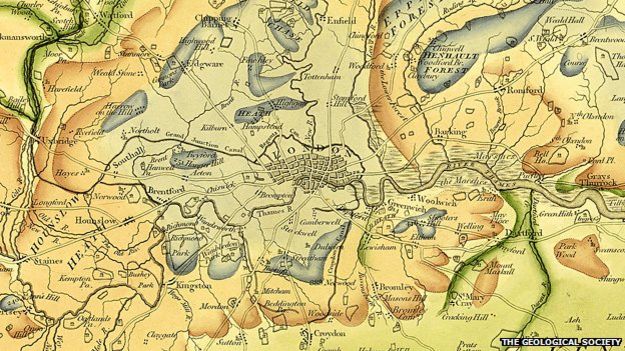http://www.bbc.com/news/science-environment-32004102
William Smith (1769-1839) is often referred to as the "Father of English Geology" - a title bestowed on him by The Geological Society, which at first had been reluctant to embrace his vision.
The organisation's first members were drawn from the metropolitan elite, and they took a rather disdainful view of the blacksmith's son turned surveyor.
But the big landowners knew his worth. They brought Smith in to help them maximise the worth of their estates - to drain land, to improve the soil, to find building stone, and, above all, to find coal.

It is this work that would have brought him into contact with the rocks and with the fossils that would lead him to his greatest scientific contribution.
John Henry explained: "The concept which enabled him to do the mapping and that drove him along almost obsessively was this realisation that specific fossils were unique to a specific stratum, and that you knew where you were in a sequence if you could see what the fossils were. That was the breakthrough. People had been collecting them for a long time and naming them in the Linnaean way, but without any real idea that they were in a sequence. But Smith knew it."
Today, it is called the "principle of faunal succession", and this idea holds that because fossils succeed one another in order, rocks containing similar fossils are similar in age.
This principle has enabled scientists to construct the geological timescale by which the relative ages of rocks can be measured, and thereby understand the history of the Earth.
No wonder Simon Winchester called his 2001 book about William Smith, The Map that Changed the World.
Monday, 23 March, is Smith's birth date.
Sir David Attenborough is going to unveil a plaque at Smith's former residence at 15 Buckingham Street on London's Embankment.

No comments:
Post a Comment